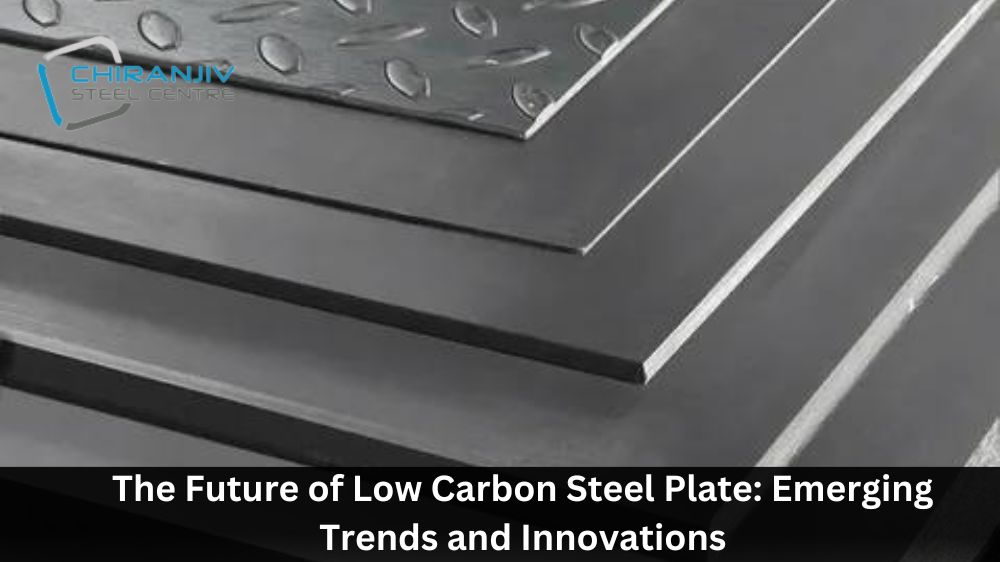The Future of Low Carbon Steel Plate: Emerging Trends and Innovations
Low carbon steel plates have been essential in many industries for decades. Using low carbon steel plates has helped minimize carbon emissions, making it a critical material in the fight against climate change. However, as technology advances, so does the manufacturing process of low carbon steel plates. This blog post will explore the emerging trends and innovations in the production, use, and application of low carbon steel plates.
What is Low Carbon Steel Plate?
Low Carbon Steel Plate is a type of steel containing low levels of carbon, usually 0.3% or less. It’s often used for applications that require greater strength and durability than ordinary carbon steel, such as automotive frames, structural components in the construction industry, and heavily loaded machines. Low Carbon Steel Plate is also known for its ductility and tensile strength, making it ideal for welding processes.
Advantages of Low Carbon Steel Pipe
It is more durable
Low carbon steel pipe is more durable than other types of steel pipe. This is because low carbon steel pipe is made from a stronger material that can withstand more wear and tear. Also, low carbon steel pipe is less likely to rust or corrode, so that it will last longer.
It is easier to work with
Low carbon steel pipe is also easier to work with than other types of steel pipe. This is because low carbon steel pipe can be welded, cut, and formed into various shapes without being brittle. Additionally, low carbon steel pipe is less likely to crack or break when being worked with.
It is less expensive
Low carbon steel pipe is also less expensive than other types of steel pipe. This is because low carbon steel pipe does not require as much processing as other types of steel pipe. Additionally, low carbon steel pipe is typically made from recycled materials, which helps to keep costs down.
It has a lower environmental impact
Low carbon steel pipe also has a lower environmental impact than other types of steel pipe. This is because low carbon steel pipe does not release as many harmful emissions when it is produced. Additionally, low carbon steel pipes can be recycled or reused after use, which helps reduce waste.
It is stronger
Low carbon steel pipe is also stronger than other types of steel pipe. This makes it ideal for use in applications requiring strength and durability, such as in construction or automotive applications.
Emerging Trends and Innovations of Low Carbon Steel Plate
Advanced Manufacturing Processes
The manufacturing process of low carbon steel plates has come a long way over the years. However, emerging technologies such as additive manufacturing make it possible to create low carbon steel plates with more precision and less waste. Additive manufacturing can produce complex shapes previously impossible with traditional manufacturing methods, leading to less material wastage. This will reduce production costs, improve efficiency, and lower carbon footprint.
Reduced Thickness
Advancements in steel production technology have enabled manufacturers to produce thinner and lighter low carbon steel plates that retain the same strength and durability levels. This reduction in thickness will directly contribute to the reduction in carbon emissions since lower thickness will require less raw material to produce.
Recycling
Recycling of low carbon steel plates has been an essential aspect of the industry for a long time. However, emerging technologies such as electric arc furnaces and induction furnaces are making it possible for recycling steel plates to attain higher quality than ever before. This process, known as secondary production, minimizes the production of new steel plates, reducing carbon emissions by lowering the energy consumption necessary in the initial stages of production.
Innovative Applications
The use of low carbon steel plates is wider than just a few industries. New applications are emerging for low carbon steel plates from the automotive industry to construction. Research and development on using low carbon steel plates in solar panels are underway. Additionally, the aviation industry is exploring possibilities of replacing existing materials with low carbon steel plates to help reduce aircraft weight and fuel consumption, contributing to a significant reduction in carbon emissions.
Composites
Emerging research in composites also contributes to the future of low carbon steel plates. Mixing low carbon steel with other materials such as ceramics, plastics, fibreglass, or graphite promises to deliver lighter, more durable, and higher-performance products. These composites can deliver improved structural properties, helping with applications in different industries.
Conclusion:
The future of low carbon steel plates seems promising, with emerging trends and innovations bringing new possibilities in manufacturing, recycling, and product applications. Reducing thickness, using advanced manufacturing processes, innovations in application, recycling, and composites promises to deliver a low carbon future. These emerging trends and innovations are a positive direction towards the fight against climate change, making low carbon steel plates an essential component for a more sustainable future.
